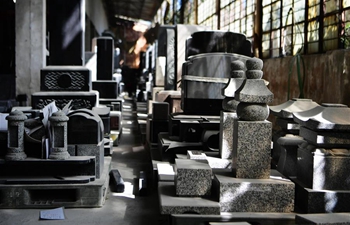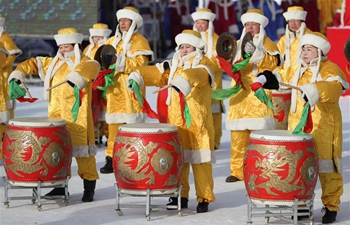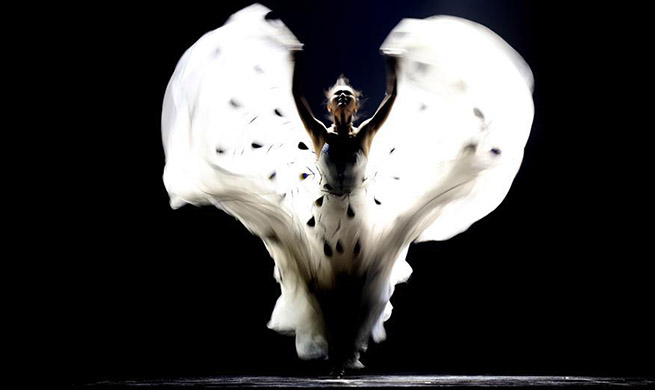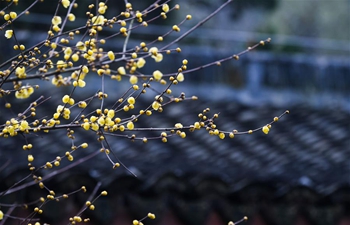JINAN, Jan. 20 (Xinhua) -- Standing by a furnace burning at over 1,300 degrees Celsius, Sun Yunyi's face is beaded with sweat. He blows air through a long hollow iron pipe while watching the colored glaze bulging from the other end.
Sun, 52, is a household name in the city of Zibo, east China's Shandong Province. Known for his skill in Boshan "chicken-fat yellow" glaze, his artwork was presented to guests from all over the world during the two-day Qingdao summit of the Shanghai Cooperation Organization in June 2018.
China's colored glaze has a global reputation, and Boshan is its cradle. Starting in the Tang Dynasty (618-907), Boshan colored glaze production began to boom in the early Ming Dynasty (1368-1644) and reached its prime during the Qing Dynasty (1644-1911).
For its glamorous color and jade-like texture, the translucent chicken-fat yellow glaze was regarded as a substitute for real jades in ancient China.
Sun's ancestors in Boshan started making colored glazeware as a tribute to the royals in the mid-Qing. At the age of 16, Sun learned Chinese painting from his uncle, before working for a local glaze factory.
With a not-so-elegant but vivid name, chicken-fat yellow (also known as imperial yellow) glazeware was once for the exclusive use of imperial families. Private production was strictly prohibited.
However, the rare glazing technique was lost at the turn of the 20th century when the Qing regime fell into chaos -- the empire founded by the manchurian Aisin Giorro rulers 250 years previously was crumbling at its feet.
In the 1990s, Sun's father and uncle set up a small workshop, and reaserched the making of chicken-fat yellow glaze, hoping to restore the lost art.
Chicken-fat yellow glazeware was never easy to make. Colored glaze in a liquid state cools down and hardens so quickly after being taken from the furnace that glassblowing must be carried out when the enamel is neither too hard nor too soft.
Success lies in ensuring every step is neat and clear, as each step only allows one chance to get it right.
"Nine out of 10 attempts usually fail," Sun said.
The countless failed attempts imposed enormous costs. To innovate the old technique and make improvements, Sun traveled the world in search of the finest raw materials.
"I've earned my kudos right through puffing," Sun said. After decades of practice, he finally brought the ancient craftsmanship back to life in 2007.
Soon after he took over the workshop three years later, he established a colored glaze company, seeking to inject modern design philosophy into the crafts.
"Top-quality works should feel like jade, sound like ancient stone chimes, and look like halos," Sun said. "These are my criteria for excellence."
The craft has earned a place on the list of provincial intangible cultural heritage. In 2013, he became a national patent holder of the production method.
His artwork has been widely sought after by both domestic and foreign collectors in Britain, Australia and the United States, with a 50-percent annual increase in sales.
Sun's success drew the attention of the Palace Museum in Beijing, which signed a three-year contract with him to reproduce over 1,000 pieces of its collections. In 2015, Sun's works were exhibited in the Baoyun Building, also known as the Hall of Embodied Treasures, in the southwestern corner of the Forbidden City.
Boshan District has developed colored glaze into a local pillar industry with over 5,000 practitioners, 30 master studios and 13 manufacturers, generating an output value of more than 48 million yuan (7.1 million U.S. dollars) per year.
Sun feels no rush to pass on the cause to his son, who is applying to art college in Hangzhou in Zhejiang Province.
"I won't push him too hard," he said. "Whether he takes it up as a lifetime career or not, it's his choice."

















